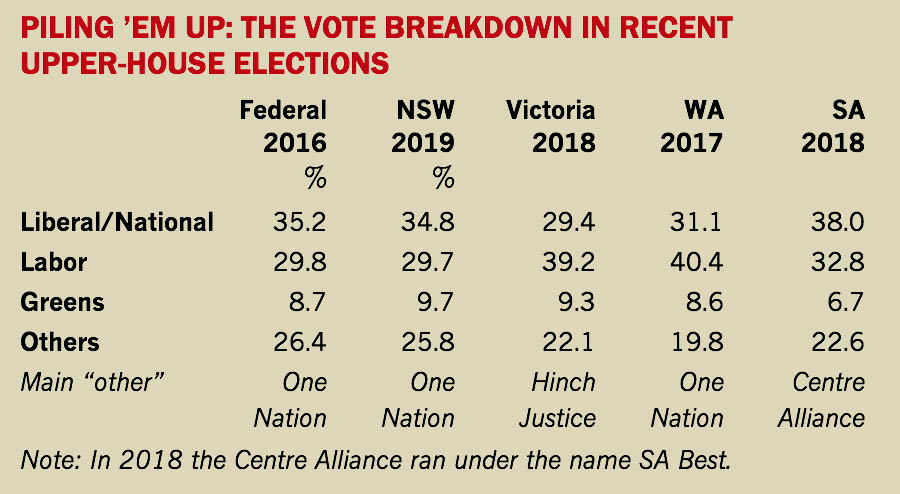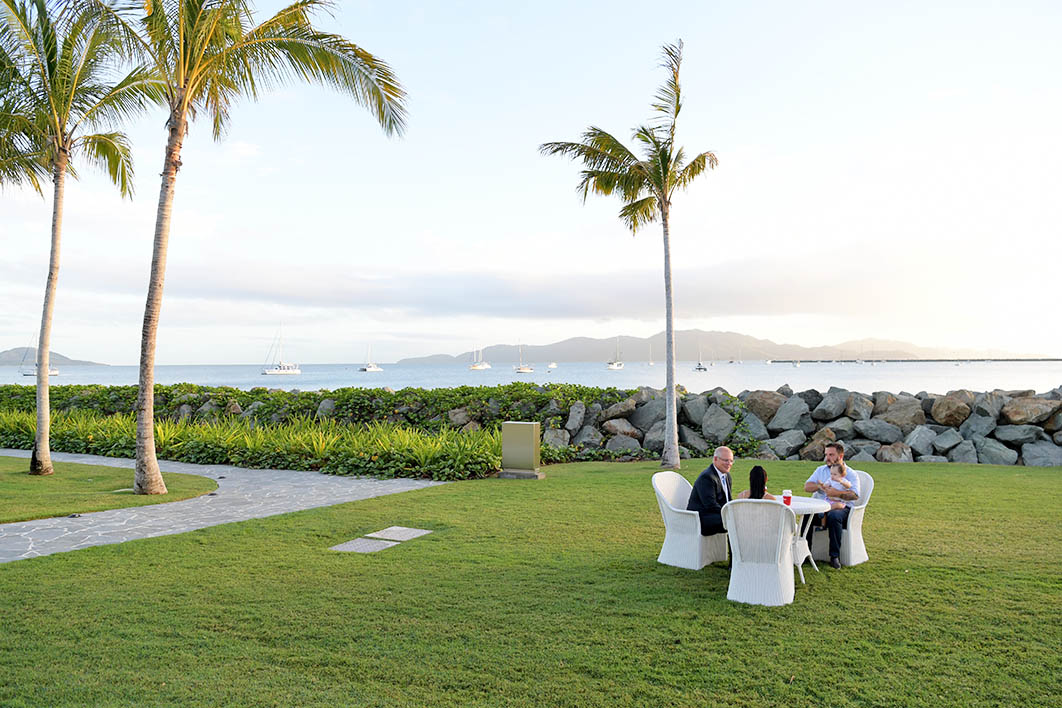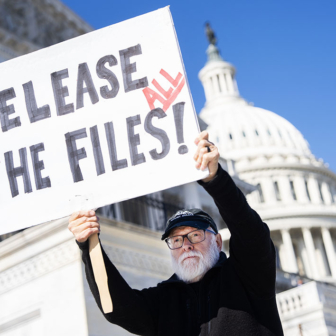We might be up very late tomorrow night. If the nationwide polls are right — and they are singing more or less in unison — Labor will win government tomorrow, but not by much. We might have to wait for the results from Western Australia to be certain.
But if you trust instead the barrage of individual seat polling released this week by YouGov Galaxy, Saturday night is unlikely to produce a result. We would be headed for a hung parliament, with neither side having a majority and — as happened in 2010 — the crossbenchers would be left to choose the next PM and government.
In the past, the nationwide polls have been much more reliable than the individual seat polling, and that’s most likely to be the case this time too. The Coalition has not won a credible nationwide poll since the last election. John Howard three times came back from being well behind in the polls, but he had always regained the lead well before the finish line. That hasn’t happened this time.
Australia’s national polls — which are now done mostly by the YouGov Galaxy group, including Newspoll — generally have a fine record in measuring state and national voting intention. But we saw a startling exception six months ago in Victoria, when Labor was re-elected with 57.5 per cent of the vote, far from the 53.5 per cent predicted by Newspoll or the 53 per cent predicted by the Galaxy poll published in the Murdoch tabloids. The NSW election saw them back on song.
Seat-by-seat polls, meanwhile, have a sad history of being hit-and-miss, as we saw at the 2016 election. Analysis by the Poll Bludger, William Bowe, concluded that, on average, their margin of error was almost 7 per cent “and with an overall skew of at least 1 per cent in favour of the Coalition… results tended to look too much like the last election and too little like this one.”
Galaxy’s performance at the Victorian election was even worse. Its seat polling kept reporting seats as having changed little since the last election — when in fact the two-party vote was shifting by more than 10 per cent in some of them. On average it overstated the Liberals’ primary vote by more than 8 per cent. So its polls released over the past two days should be treated with scepticism. If correct, they would be very bad for Labor; they report the Coalition hanging on to almost every marginal seat polled.
At face value, in fact, this week’s twenty seat polls by Galaxy and Newspoll imply either no change and a hung parliament, or a slight Liberal gain. They report Labor getting small swings where it needs a slightly larger swing, and large swings only in seats where it needs an even larger swing. In total, they average a swing to Labor of 1.2 per cent, but the only seat Labor would clearly win is Gilmore, whereas it would lose Lindsay (and on the Newspoll, Herbert).
I’ll believe all that when I see it.
But the evidence does suggest the outcome will be a lot closer than most of us assumed a month ago. The Coalition has offered next to nothing in new policies, and has focused on making Labor the issue. Its scare campaign against Labor’s plans to withdraw tax concessions has been effective, if dishonest. Labor may come to regret its failure to prepare better campaign defences on these fronts, particularly over its plan to stop sending billions of dollars a year in cheques to retired shareholders.
(One example: Labor in fact is not proposing a “retiree tax.” It is proposing to end an expensive, bizarre and unique practice whereby the government in effect sends part of each company’s tax payment to some of its shareholders, rather than to revenue. Not surprisingly, research by Ben Phillips and Matthew Gray of the Australian National University concludes that almost 90 per cent of the benefits go to the wealthiest 20 per cent of households. It’s welfare for the wealthy, it happens in no other country, and it costs us $6 billion a year.)
People will rarely vote to give up their own tax breaks. The 2016 census found high concentrations of elderly people in some of the key marginal seats: Gilmore (where 26.2 per cent of people were aged sixty-five or over), Flinders (24.6), Cowper (23.2), Page (21.8), Robertson (21.0), Indi (20.9), Braddon (20.7), Boothby (20.1) and many more. The issue may well cost Labor crucial seats.
Older people (and Coalition voters) are always over-represented in the pre-poll votes, and this time there will be close to five million of them (4.05 million had voted by Thursday night). The pre-poll booths always have the largest vote, and hence will be the last to report in on Saturday night.
A warning for Labor supporters: if the early counts show your candidate edging ahead of the Liberal, don’t get too euphoric. The Liberals will edge their way back late in the night. Labor candidates will need to have a sizeable lead in the booth votes on polling day — which will be the first ones reported in — to be sure of victory.
(There is an interesting sociological essay to be written on who prefers to vote pre-poll, and why. Demographic factors are obviously the biggest influence, but I get the sense that the romance of the “democracy sausage” is primarily experienced by Labor and Green voters — whereas Coalition voters, being less communitarian in outlook, prefer to get their voting done quickly and privately.)
For what it’s worth, the national polls published this week have all reported Labor winning 51 or 52 per cent of the vote after preferences. Poll Bludger’s tracking poll has Labor at 51.6 per cent after preferences, a swing of just under 2 per cent. If there were a uniform swing across Australia, Antony Green’s pendulum tells us that would see Labor take eight seats from the Coalition — five in Queensland (Capricornia, Forde, Flynn, Petrie and Dickson) and three in New South Wales (Gilmore, Robertson and Banks) — on top of two already transformed by the Victorian redistribution (Dunkley and Corangamite).
But we know the swings are never uniform. And the Poll Bludger tracking poll reports very different swings between one state and another. New South Wales is reported as showing a 1.7 per cent swing to the Coalition (which on paper could see it take Lindsay from Labor and Wentworth from independent Kerryn Phelps). South Australia is showing a swing to Labor, but only 1.4 per cent, too small to shift any seats. And no poll has released figures for Tasmania.
The largest swings to Labor are reported as being in Victoria (3.1 per cent), Queensland (2.8) and Western Australia (2.4). Votes will start trickling in from about 7pm — beware, those early figures are usually from small country booths, and are rarely a good guide to the outcome — and sizeable numbers will start to land from about 7.30pm. I doubt that any commentator will try to call this election early in the night.
To build the picture, let’s start with Queensland. It has thirty seats, a fifth of the parliament, and in recent decades it has usually been a Coalition stronghold. But when it swings, it can do so with the force of a cyclone: Labor picked up eight seats in 2007, and for a while the polls were suggesting it might do so again this time. But divisions over the Adani mine have left Labor stranded uncomfortably in the middle, and Clive Palmer’s massive advertising blitz has also had an impact — although it looks as if he may have attracted more voters from One Nation than from either major party.
For the past year or more, the Coalition has pandered to the concerns of regional Queensland — its MPs drove the decision to dump Malcolm Turnbull as prime minister — so it’s not surprising that the punters are tipping the Coalition to hold the marginal seats of Flynn (Gladstone), Capricornia (Rockhampton), Dawson (Mackay) and Leichhardt (Cairns), and take back Herbert (Townsville), which Labor won by thirty-seven votes last time. That seems to be roughly in line with what the parties themselves are telling journalists.
But if there’s a swing against Labor in north and central Queensland, and a sizeable swing to Labor at state level, that implies an even bigger swing to Labor in Brisbane. It wouldn’t be the first time: the 2017 election left the Coalition with just five of the forty-one seats in Queensland’s capital. Most of the focus has been on Peter Dutton’s outer-fringe seat of Dickson, but the punters are also tipping Labor to win Forde and Petrie. If there is a big swing to Labor, keep an eye on Brisbane and Bonner as well.
New South Wales has forty-seven seats, which last time divided 24–23 in Labor’s favour. Since then, Wentworth has fallen to independent Kerryn Phelps, but the punters are convinced that was a one-off, and tomorrow the blue-ribbon seat will revert to the Liberals’ repeat candidate, former diplomat and Howard staffer Dave Sharma.
The Coalition is fighting on two fronts: against Labor in Sydney, and against independents in the bush. Rob Oakeshott, who had five years as MP for Lyne, is odds-on to return as the MP for Cowper (which now covers much the same territory). The mayor of Albury, Kevin Mack, is rated just ahead of former health minister Sussan Ley in a tight battle for the southern seat of Farrer. The Shooters Party, which at state level now represents half of the territory of New South Wales, is running only in Calare, where it is tipped to miss its target.
The Nowra-based south-coast seat of Gilmore is seen as the seat most likely to fall to Labor. Robertson on the central coast is another. With Turnbull supporter Craig Laundy quitting politics, Reid is now too close to call. And in recent days, former Olympian Zali Steggall has become outright favourite to displace Tony Abbott from the North Shore seat of Warringah.
Labor has already notionally gained three seats in Victoria as a result of the redistribution, which lifted the state back to thirty-eight seats. The new seat of Fraser is in the heart of Labor’s western suburbs, while two marginal Liberal seats have become marginal Labor on 2016 voting: Dunkley, around Frankston, and Corangamite, covering the Bellarine Peninsula, Geelong’s new southern suburbs, and southwest down to Lorne. On 2016 voting, Antony Green estimates Labor starts with twenty-one Victorian seats to the Coalition’s fifteen, with one Green (Adam Bandt) and one independent (Cathy McGowan).
That imbalance is likely to get worse tomorrow night. The eastern-suburbs seat of Chisholm, deserted by its MP Julia Banks, is expected to be one Coalition casualty. The outer southeastern seat of La Trobe is seen as the next most likely. Between them lie Deakin and Casey, with Deakin on a knife edge. South of Melbourne, health minister Greg Hunt is now expected to survive in Flinders.
The inner-eastern suburbs are normally safe Liberal territory, but not now. Nowhere is the gulf between the Liberal-led government and the Liberals’ base wider than in seats like Higgins and Kooyong, home to educated, affluent voters who know that climate change has to be tackled, and are tired of their government dodging the issue. Higgins, an open seat with Kelly O’Dwyer’s departure, is seen as the more vulnerable of the two, to either Labor or the Greens.
The Greens are also given a chance of taking Macnamara (nee Melbourne Ports) from Labor, but the inner-north seats of Cooper (nee Batman) and Wills are seen as out of danger. Adam Bandt appears to have a firm grip on Melbourne.
The one seat the Liberals hope to pick up in Victoria is Indi. With McGowan’s retirement, it too is an open seat, and the punters are tipping Liberal Steve Martin to win it back from McGowan’s intended successor, Helen Haines. But the punters have a track record of underestimating independents.
The northern Tasmanian seats of Bass (Launceston) and Braddon (Burnie/Devonport) are always marginal, and this time it’s Labor defending them. The punters are assuming that Bass will stay with Labor while Braddon falls to the Liberals. Both could be close.
In South Australia, Labor once had hopes of taking Christopher Pyne’s old seat of Sturt, but they have faded. Boothby is now seen as the only seat in play, but Liberal MP Nicolle Flint is expected to hold on.
Conversely, the Coalition had hopes of regaining the Darwin seat of Solomon and even the NT outback seat of Lingiari, but punters expect them to stay with Labor.
The same is true for the Western Australian seat of Cowan, held by the first Muslim woman in the House, Labor’s Anne Aly. The question in the west is rather how many seats Labor will gain. The punters’ answer is: three. Hasluck is the state’s most marginal seat, held by the first Aboriginal person to become a minister, the aged care minister Ken Wyatt. Stirling has been vacated by former justice minister Michael Keenan, while inner-suburban Swan is where Kim Beazley’s daughter Hannah is challenging Liberal MP Steve Irons. All three are tipped to fall to Labor.
But if the swing to Labor is larger than anticipated, look out for Pearce, held by attorney-general and potential Liberal leader Christian Porter; Curtin, the blue-ribbon coastal seat just vacated by former foreign minister Julie Bishop; and even Andrew Hastie’s seat of Canning. But all are tipped to stay with the government.
The exact numbers from the bookies’ odds vary from hour to hour, and from bookie to bookie. Overall, though, they imply that Labor will win roughly eighty seats, and the Coalition roughly sixty-five, with half a dozen or so on the crossbench.
That’s in line with the nationwide polls. But with the Victorian election still fresh in my mind, I would not be surprised if Labor does a bit better than that. The betting markets have exaggerated the Coalition’s prospects at three of the last four elections; on average, at each election, the Coalition loses four seats the markets expected it to win. Every election is different, but that is its track record to date.
The Senate is notoriously hard to call. I wrote about it yesterday and at greater length three weeks ago.
The fresh news is that Senate polling by Lonergan for the Australia Institute suggests that for all the millions of dollars he has spent on those yucky yellow ads, Clive Palmer’s campaign is falling well short of winning enough votes to give him a seat in the Senate. While Senate polling has an even worse history in Australia than seat polling, Lonergan’s polling suggests that the One Nation vote is holding up better than Palmer’s.
The institute predicts that Malcolm Roberts, the climate change denier who lost his Senate seat to section 44, will regain it tomorrow in his three-way contest with Palmer and Fraser Anning. It says One Nation is also in with a chance for one of the final seats in Tasmania and South Australia — and to me, if these numbers are right, it also has a chance of pushing the Liberals and Nationals out of the final seat for the right in New South Wales, Western Australia — and possibly even Victoria.

Senate polling is usually unreliable, but it’s worth noting the solid size of the actual votes piled up by minor parties in upper house voting at state elections held since the last federal poll. Excluding the Greens, they’ve polled around 20 to 25 per cent of the vote — and in New South Wales, Queensland and Western Australia, the biggest of them has been One Nation. Like it or not, it’s proved a durable brand.
The Senate votes are the last to be counted at each polling booth, and it is often the small hours of the morning before they are added to the count. It could be even worse tomorrow night, with the vast numbers to be counted at pre-poll booths. It could be Sunday before we have a fair idea who will be in the next Senate.
Or, perhaps, who will run the country. •




